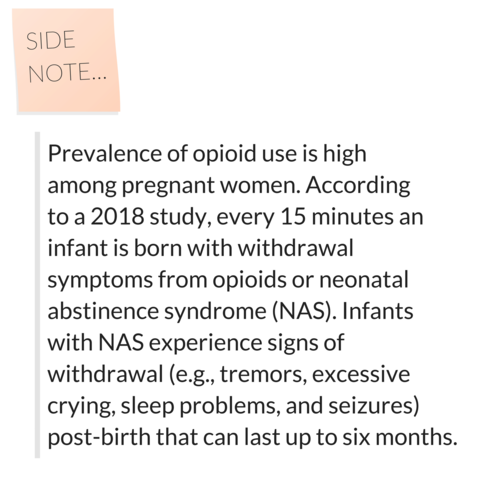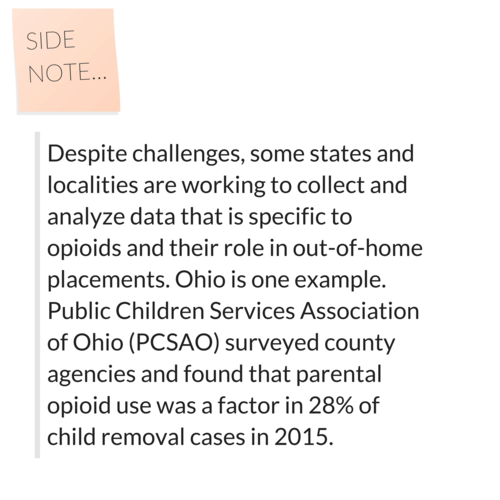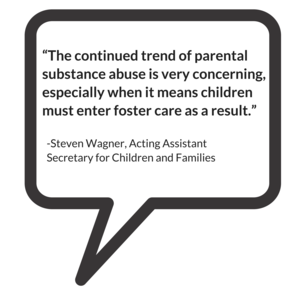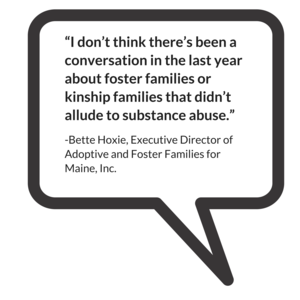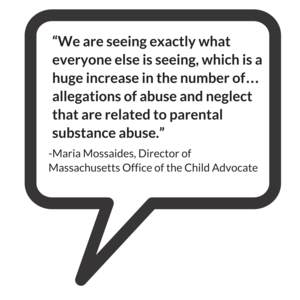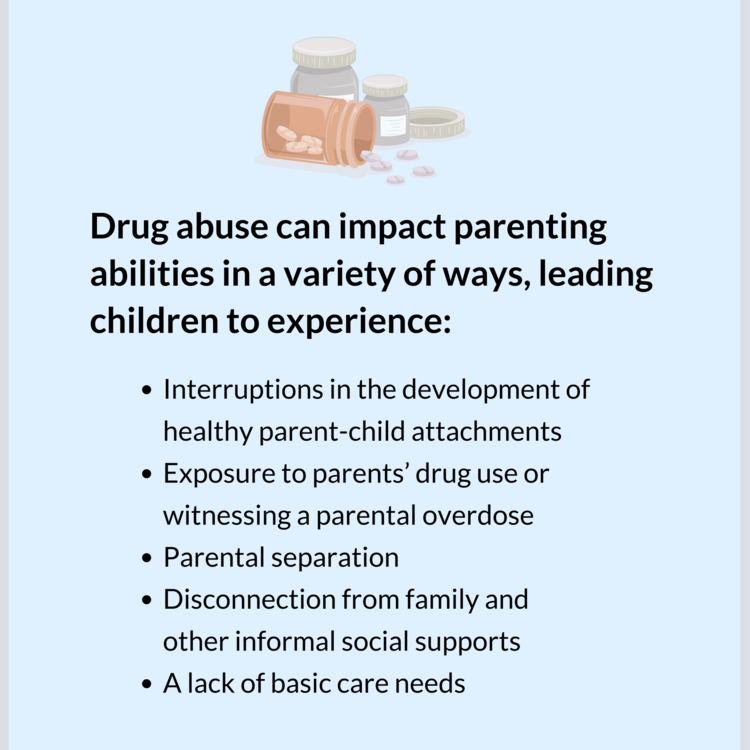Too often great ideas are kept in-house without recognizing their potential to create change beyond the communities where they are born. COA’s Innovative Practices Award (IPA) identifies, documents, and celebrates examples of successful approaches to management and service delivery practices adopted by our accredited organizations.
In 2020, a committee made up of COA volunteers and staff selected 4 finalists to move forward with a full case study. Alternative Family Services (AFS) came out the winner. Read on to find out how the AFS Enhanced Visitation Model kept families in touch during the crisis of COVID-19.
Helping families stabilize, heal, and reunify is an essential part of the work at Alternative Family Services. In-person visitation between kids in foster care and their biological family members is an integral part of the therapeutic process. The frequency of visits between parents and their kids are one of the strongest predictors of the family reuniting. The COVID-19 pandemic exacerbated the challenges kids and families must overcome on their journey towards reunification.
As the magnitude of the COVID-19 pandemic became more apparent, AFS staff and clients were suddenly faced with the reality that in-person visitation between kids and their family may be halted, or at the very least severely restricted. The ever-changing state and county guidelines added uncertainty and stress to the situation. Since many of our AFS staff, biological families, and foster families are considered a “higher-risk” demographic to have serious consequences from COVID-19, there was palpable fear in conducting in-person visits. AFS staff knew it was critical for families to continue to stay connected, especially during such uncertain times. So, a taskforce was formed that included representation from key AFS stakeholders. The group was asked to create a safe and equitable plan that would allow in-person visitation to resume. After much input and deliberation, the Enhanced Visitation Model was approved.
Exploring the AFS Enhanced Visitation Model
Health Risk Assessment
It was important for AFS staff to evaluate and address client’s COVID-19 concerns and mitigate the risk of individual exposure to the virus. The taskforce sought input from its constituents, researched professional resources, and ultimately developed the “Wellness Questionnaire.” Staff can rapidly administer this assessment tool to determine COVID-19 risk factors each visitor had been exposed to within the 14 days prior to an in-person visit.
Visitation Service Plan
A “Visitation Service Plan” is a simple, flexible, and predominately check-box/circle-based tool that seamlessly incorporates the risk factors identified in the “Wellness Questionnaire,” assigning families to one of three visitation service levels according to COVID risk level:
- Community-based (Low Risk): local government, community mandated precautions only (masks, handwashing, appropriate hygiene precautions)
- Social Distance Enhanced (Moderate Risk): physical distanced “Enhanced Visitation Venues” required
- Virtual Visitation (High Risk): virtual visitation only
AFS staff wanted to provide therapeutic strategies in a fun, genuine, and safe environment regardless of their Visitation Service Plan. Once the assessment and planning tools were established, staff needed to create pandemic-safe stations for families to interact.
Enhanced Visitation Venues
When families have a positive, stress-free visit, they are more likely to retain and practice the therapeutic skills they learn. So, AFS staff developed a variety of indoor and outdoor “Visitation Venues” that are fun, affordable, replicable, and portable. The visitation venues meet COVID-19 safety protocols so parents and their children can safely interact. Here are some examples of our indoor and outdoor venues:
Indoor Visitation Venues
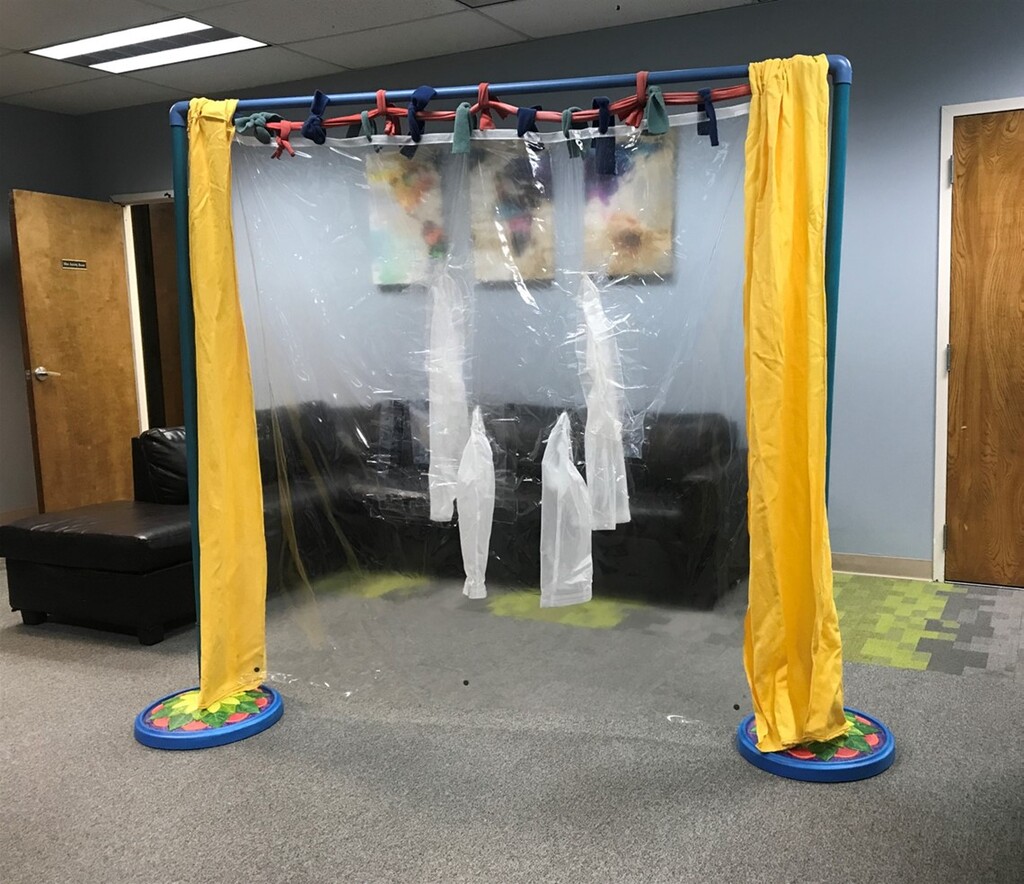
- The Hugging Station provides families with the opportunity to physically embrace, parents and children put on arm-length disposable gloves before reaching through sleeves attached to a transparent plastic curtain so they can safely hug during the pandemic. The Hugging Station can be easily decontaminated after each use.
- Activity Tables feature a Plexiglas divider, which sits on a table with parents on one side and child(ren) on the other. Participants can paint outlines of each other, play Tic-Tac-Toe or jointly create drawings with dry-erase markers, among other options.
- The Interactive Puppet Theater is where kids and parents make easy-to-construct sock puppets to safely “perform” in the puppet theater. It was designed with a table, clamps and Plexiglas with precut holes modified with rubber shields. AFS organized one-hour sock puppet workshops for staff so they can teach clients how to construct their own puppets for this playful encounter.
- Gaming Stations featuring video game consoles and large television screens allow families to play video games together while sitting at least six feet apart from one another, to ensure proper social distancing.
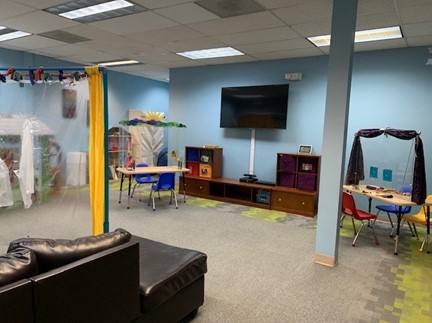
Curious to see what these options look like? Check out this video that highlights our indoor visitation venues.
Outdoor Visitation Venues
Since research has shown COVID-19 is less likely to spread between individuals while outdoors, AFS staff has developed a variety of safe outdoor venues that can easily be setup and disinfected after each use. When visits occur in the parking lots of one of our offices, artificial turf and gymnastic mats provide ground cover for families to play outdoor games. Pop-up tents provide shade when necessary, and bikes and tricycles are provided for families to ride together (staff uses a Clorox Total 360® Disinfectant Cleaner between uses).
AFS Visitation in 2021
The AFS Enhanced Visitation Model, funded with the assistance of the Walter S. Johnson Foundation, was the winner of COA’s 2020 Innovative Practices Award. While we were humbled to be selected, we are always striving to be innovative when it comes to providing the highest level of care to our children and families. At the end of every Enhanced Visitation Session, staff collects feedback from families to see what they like and what they feel has room for improvement.
While we are thankful that the COVID-19 vaccine is being distributed, AFS will continue to adhere to our Enhanced Visitation Model for the foreseeable future to ensure that staff, families and resource parents remain safe.
The views, information and opinions expressed herein are those of the author; they do not necessarily reflect those of the Council on Accreditation (COA). COA invites guest authors to contribute to the COA blog due to COA’s confidence in their knowledge on the subject matter and their expertise in their chosen field.
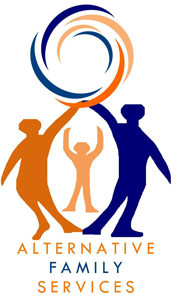
Alternative Family Services
Founded in 1978, Alternative Family Services (AFS) provides thoughtful, informed care, adoption and mental health services to foster children and youth throughout Northern California. The mission of Alternative Family Services is to support vulnerable children and families in need of stability, safety and wellbeing in their communities.
AFS, a COA-certified foster family agency, currently serves the diverse and varied needs of 1,500 foster youth, plus their biological and foster families, in the San Francisco Bay Area and Greater Sacramento Regions. Services provided by AFS include therapeutic foster care, Intensive Services Foster Care, support for foster children with developmental disabilities, therapeutic visitation, community-based mental health services, transitional housing support, independent life skills training, and much more.
COA would like to congratulate Alternative Family Services (AFS), a Resource Family Agency and mental health service provider serving Northern California, as winner of the 2020 Innovative Practices Award for its “Enhanced Visitation Model: Foster Care” program!
The Innovative Practices Award identifies, documents, and celebrates examples of successful approaches to management and service delivery practices adopted by our accredited organizations. Too often great ideas are kept in-house, without recognizing their potential to create change beyond. The purpose of the Innovative Practices Award is to amplify the effect of one great idea by elevating it to the national stage and offering it as a resource for direct service providers, leadership, researchers, and advocates across the full spectrum of human services.
This year, innovation is more important than ever. The COVID-19 pandemic has challenged every sector of our society, but it has presented special obstacles for the human and social services field. 2020 has also reinforced the urgent need for better equity, diversity, and inclusion. With that in mind, COA requested that Innovative Practices Award submissions address one or both topics.
This year’s evaluation process began with a preliminary round of submissions in which applicants provided a one-page synopsis of their innovative practice. Four finalists were selected to move forward and submitted their full case studies, which were reviewed by a team of expert judges. The community got to weigh in, as well, with hundreds of public votes making up 5% of each submission’s final score.
You can view the case study of the Enhanced Visitation Model program here.
ABOUT THE ENHANCED VISITATION MODEL PROGRAM
Visitation frequency between parent and child is one of the strongest predictors of successful family reunification within the foster care system. The initial response to the COVID pandemic for many agencies and institutions charged with overseeing family visitation was to restrict face to face services. Even as government and private agencies have begun to reinstitute face-to-face visitation, it is clear that the pandemic will ebb and flow. If visitation is going to be available to all families, some families will need to practice social distancing or utilize virtual technologies during visitation in order to contain contagion and meet foster parent fears and demands for safety. Families involved in the foster care system are often distrustful of how resources are allocated and rules are applied. When restrictions are placed upon parents’ right to visit their child, it is imperative that the process be transparent and equitable. To accomplish its purpose, the visitation experience must also be positive and encourage healthy interaction.
AFS’ Enhanced Visitation Model incorporates risk assessment and visit planning tools to assist staff in developing transparent and equitable visitation plans for all families. They have coupled this with replicable visitation activities or venues that can safely provide a continuum of healthy visit experiences regardless of risk level. Three levels of visitation service delivery address the special needs of families required to adhere to community, social distancing, or quarantine requirements. AFS’ Enhanced Visitation Model is designed to inspire clients and parents to play and communicate freely while minimizing the potential for client and family re-traumatization that can be caused by difficult to enforce rules and restrictive visitation environments. Their Enhanced Visitation Model is intentionally easy to replicate. They hope their model inspires and encourages family visitation providers to address the challenges of the COVID19 environment with innovative and creative visitation practices for all the families they serve.
Learn more about Alternative Family Services at afs4kids.org.
A big thank you to Alternative Family Services (AFS) for this guest post!
Did you read the earlier COA post on “6 Resources for potential foster parents” and are looking for more information and insights? Then you’ve come to the right place. Whether you want to know more about how to foster a child or you’re more interested in adoption, keep reading below for more.
Fostering
Additional federal government resources
In addition to The Child Welfare Information Gateway, there are other great sources of information direct from the federal government. For example, USA.gov has multiple resources about foster care, adoption and other related fields.
State and county resources
Not only does foster care vary by state, but it also varies by county or parish and even sometimes by municipality. These are great resources, as they can let you know specifically what you’ll need to become a licensed and approved foster home.
In California, where we here at AFS are based, state-level information usually comes from the California Department of Social Services. And, most counties in the state, such as San Francisco County, will have their own departments dedicated to child welfare broadly and foster care specifically. Seeking out information local to you is very important and will make your journey towards fostering a youth easier.
Interested in staying up to date on the newest laws being considered at the state level? The National Conference of State Legislatures is a good place to start.
Private organizations
In the foster care space, there are numerable nonprofits across the country. Whether they’re a foster family agency like AFS or a more philanthropic organization like the Annie E Casey Foundation, nonprofits can have a wealth of knowledge and resources to take advantage of both before and after you’re certified to foster children.
News sources
In the world of foster care, it’s important to stay current on industry news. As a Resource Parent, it’s key to stay on top of any changes in legislation and always be aware of best practices. Consider setting up a Google News alert, and regularly check sources like the Chronicle of Social Change and your local news outlets.
Adoption
Dedicated private adoption resources
In addition to the many great resources in the last COA post, here are some other great sources of information and insights: AdoptUSKids, adoption.org, the Center for Parent Information and Resources, the Dave Thomas Foundation, the North American Council on Adoptable Children and many others.
Social media
Talking to someone who’s been through the adoption process can be helpful and reassuring — in this way, social media can be great. There are active communities of parents who have adopted children on Facebook, Pinterest and Twitter ready to provide you with inspiration, guidance, ideas and even just a sympathetic ear.
But, it’s important to take information from social media with a grain of salt, especially from individuals claiming to be experts. It’s important to be cautious of misinformation. When in doubt, seek out trustworthy sources like COA-certified nonprofits to answer your questions.
A local attorney
Adoption impacts your taxes, estate planning and so much more. Make sure everything is in order by working with legal help.
What other fostering and adoption resources do you use? Let us know in the comments section below. We’d love to hear from you!
The views, information and opinions expressed herein are those of the author; they do not necessarily reflect those of the Council on Accreditation (COA). COA invites guest authors to contribute to the COA blog due to COA’s confidence in their knowledge on the subject matter and their expertise in their chosen field.

Alternative Family Services
Founded in 1978, Alternative Family Services (AFS) provides thoughtful, informed care, adoption and mental health services to foster children and youth throughout Northern California. The mission of Alternative Family Services is to support vulnerable children and families in need of stability, safety and wellbeing in their communities.
AFS, a COA-certified foster family agency, currently serves the diverse and varied needs of 1,500 foster youth, plus their biological and foster families, in the San Francisco Bay Area and Greater Sacramento Regions. Services provided by AFS include therapeutic foster care, Intensive Services Foster Care, support for foster children with developmental disabilities, therapeutic visitation, community-based mental health services, transitional housing support, independent life skills training, and much more.
Too often great ideas are kept in-house without recognizing their potential to create change beyond the communities where they are born. COA’s Innovative Practices Award (IPA) identifies, documents, and celebrates examples of successful approaches to management and service delivery practices adopted by our accredited organizations.
In 2018, a committee made up of COA volunteers and staff selected 6 finalists from over 45 Innovative Practices Award submissions to move forward with a full case study. The St. Louis-based Foster & Adoptive Care Coalition’s 30 Days to Family® came out the winner. Read on to find out how 30 Days to Family® is leading the charge to create stability for kids in the chaotic world of foster care.
Seven siblings entered foster care when they were discovered in deplorable conditions with no food or water. With no known relatives in the area, they were split up between four separate, distant foster homes. Eight days after our team stepped in, all children were placed together, and, one year later, are still in the same home.
Maliek’s father’s beating sent him to the hospital. Lost to addiction, his mother was nowhere to be found. His grandmother, a refugee from the Rwandan genocide, wanted custody, but because she spoke limited English, the licensing team refused to accommodate her. His aunt also wanted custody but lived out of state. The Coalition stepped in to provide translation services and one-on-one training with grandma so she could become a licensed relative provider for Maliek while his aunt went through the lengthy ICPC process. One year later, Maliek was happily in the guardianship of his aunt, his grandmother living in to assist with childcare.
* * *
By the start of the opioid epidemic in 2011, the St. Louis-based Foster & Adoptive Care Coalition had become family-finding experts. We were the first agency in the country to utilize full-time private investigators, and our work was featured in The New York Times and TIME Magazine. But like everyone else, we were doing family finding for children who had already spent years in foster care.
Why were we waiting? We know that long-term foster care is bad for kids. We know that extended family experience deep grief because they’ve lost a child to the system for years. And we know that relatives often respond to requests for help by telling us, “I said I could help years ago, but then nothing happened.”
The Fostering Connections Act of 2008 mandated that all family members be alerted within 30 days of a child entering foster care, but we know that doesn’t happen. Lack of time, tools, and training mean a caseworker identifies an average of only seven relatives. Though a safe, appropriate family member could have been found, a nonrelative foster parent is called and, as a result, children suffer in isolation from their culture of origin, school, neighborhood, and church.
To make matters worse, Missouri does not have enough foster homes to deal with a steep increase in the number of children entering care due to the opioid epidemic. In the last 10 years, Missouri has seen a 42% increase in new entries, with more than 20,300 children spending time in foster care in 2018.
Realizing an opportunity to do better work up front, we created 30 Days to Family®.
30 Days to Family® is an intensive, short-term intervention that places children in the homes of safe and nurturing relatives within 30 days of entering foster care. It works because 30 Days to Family® Specialists are required to find an average of 150 relatives for each child or sibling group. In the last eight years, we’ve learned many lessons about how to find and engage family. Here are the top three:
Work fast
Every night in foster care for a child is a night in crisis. That’s why we initiate 30 Days to Family® the moment a child enters foster care. A member of our team attends the child’s first protective custody hearing to create a sense of urgency around the case. The more time a child spends in care, the more likely it is that relatives will fall away or disengage. Immediacy is key.
And that attitude of immediacy permeates every aspect of every case. If a relative expresses interest in providing placement, we drop everything and assess for safety on the spot. Relative foster parents shake up their entire lives when they agree to care for our kids; the least we can do is match their enthusiasm and flexibility.
“We operate from a mindset of ‘don’t put off tomorrow what can be completed today.’”
When it comes to 30 Days to Family® cases, regular business hours do not apply. We operate from a mindset of “don’t put off tomorrow what can be completed today.” The early tasks in a case are critical for setting the tempo and tone of everything that comes after. Our team never wants to let an opportunity slip through their fingers to find a safe, appropriate relative for a child and get the whole professional team on the same page.
But we don’t slow down once a relative steps forward. Our Specialists bring the same sense of urgency to support as to recruitment. We will not allow a disruption because daycare isn’t in place and the caregiver has to choose between a job and a child. This person became a parent days ago – they have a million things to deal with and calling daycares for openings or doctors for Medicaid eligibility distracts them from meeting the needs of the child in their care.
Engage everyone
When it comes to our kids, everyone has something to contribute. While they may not be able to take placement, a retired uncle may be able to transport the kids to appointments, grandma could watch them after school, or a cousin could help cook dinner on her nights off.
You simply never know when you will find a relative with something amazing to give. To that end, we will contact every living adult relative despite their background, criminal history, abuse and neglect history, social situation, or living conditions. Even if they aren’t appropriate for placement, they may know of a long-lost relative who will prove invaluable in supporting the family. Everyone has a piece of the puzzle.
Often, our team will hear that an aunt or grandparent doesn’t want to be involved – they had enough of mom and dad years ago. Or maybe they don’t trust the child welfare system. A key to our success has been to never take that at face value. We always reach out to hear their story, and often find that if we listen actively and with empathy, they will become an active part of the child’s life.
Another thing that sets 30 Days to Family® apart is its commitment to involving paternal relatives. We do not wait for paternity to be established to reach out, as we’ve found that cousins or grandparents will often step up if they know the children. Biological relation is not a deciding factor for many of our caregivers. Many will ask for placement even after a conclusive paternity test shows they have no relation to the child.
However, we do always attempt to establish paternity. We know kids do better when they’re connected to family. To that end, we’ll do our best to give them as much information as possible. We’ve even begun conducting our own paternity tests to speed things up.
Support always
“Focusing on natural supports strengthens the caregiver’s existing social network, offers more flexibility, and gives kids more relative connection.”
Just as important as finding a relative placement is putting an end to what we call “relative dumping”– you know, when grandma is asked to take in her four grandkids with no support. Say grandma has a good job at a factory, but inflexible shifts. Suddenly, all the kids in her care need physicals, dentist appointments, psychological exams, new school enrollment, court dates, and team meetings – all within a month. Instead, our team utilizes our proprietary Roadmap to Family, which guarantees all formal and informal supports are in place to keep grandma focused on caring for her grandkids.
The Roadmap to Family is a thorough, culturally competent plan created in concert with the family. Everyone has buy-in and makes a commitment. Our team focuses on “natural” supports rather than “prescribed” supports: We’ll find a cousin to take the kids to their doctor’s appointments rather than rely on public transportation, or an aunt who is a math teacher instead of hiring a tutor to help with homework. Focusing on natural supports strengthens the caregiver’s existing social network, offers more flexibility, and gives kids more relative connection.
Another key to 30 Days to Family® is the inclusion of backup placements, often more than one. Should a placement disrupt, having multiple relatives lined up to step in ensures that the kids stay with family and are not forced to go to a stranger’s home. It eases the burden on overworked caseworkers, who otherwise might place the child in residential care due to a shortage of available nonrelative foster homes. Our team fully vets each backup as though they were taking immediate placement, so there is as little friction as possible in the event a disruption happens.
Finally, we conduct intentional, direct follow-up with caregivers at two weeks and 30 days after the end of services. We want to know if and how they’re utilizing the Roadmap to Family, if there’s any support they lack, any barriers they’re facing, or if they feel there’s any risk of the child disrupting. We want to make sure they feel supported and set up for success. If the caregiver needs anything, our team jumps back in – whatever needs to happen to minimize the disruption in the child’s life.
What’s in it for our kids?
In 2015, we secured funding for a multi-year, independent study of the 30 Days to Family®. Dr. Anne Atkinson with PolicyWorks, Ltd., a think tank based in Virginia, matched children served by 30 Days to Family® with comparable children who received services that were business as usual. The results were stunning. Children served by 30 Days to Family® exited foster care 91.4 days earlier on average. If the child had an identified disability, s/he exited foster care 257.8 days earlier. Not surprisingly, most children achieved permanency through reunification, adoption by their relative, or guardianship, reducing the need for nonrelative adoptive homes. Also, children served were half as likely to spend time in an institution (26% vs. 14%). Excitingly, children served were 81% less likely to experience placement disruptions.
By increasing permanency and stability and reducing the toxic overuse of residential treatment, 30 Days to Family® has created resilient placements which created a wide range of benefits for children, such as:
- More positive relationships with mom (61% served vs. 30% not served)
- More connection to paternal relatives (79% vs. 29%)
- Greater involvement in extra-curricular activity (60% vs. 45%)
- Higher employment for working-age teens (60% vs. 21%)
Additionally, Dr. Atkinson’s study was the first economic child welfare study of its kind in the United States. It demonstrated that every child served by 30 Days to Family® saves taxpayers an average of $10,217.61. Average savings increased to $21,687.26 for children nine and older. These numbers do not include intangible benefits such as reducing foster parent recruitment costs and easing caseworker workload. Neither does it include second-and-third-tier benefits, such as reduced Medicare costs and savings from lower percentages of children spending time in institutions. Our 30 Days to Family® Specialists can serve a minimum of 30 children per year, resulting in at least $300,000 in savings.
* * *
Family search and engagement takes work, but the rewards are worth the up-front investment of your time and resources. 30 Days to Family® represents the way forward for an overburdened child welfare system. By deepening family involvement and relationships, we build resilience among our most vulnerable children and increase buy-in in our community. By creating stability in their chaotic lives, we give our kids a chance at a genuine childhood, in which they can develop meaningful, long-term relationships, succeed in school, and pursue their passions. By being good stewards of public resources, we model responsibility and accountability. By rigorously evaluating and means-testing our own work, we set a precedent that children in foster care deserve the best we have to offer.
If your organization is interested in the 30 Days to Family® model, please contact the Foster & Adoptive Care Coalition’s Director of Program Replication, Melanie Moredock, at melaniemoredock @ foster-adopt.org.
The views, information and opinions expressed herein are those of the author; they do not necessarily reflect those of the Council on Accreditation (COA). COA invites guest authors to contribute to the COA blog due to COA’s confidence in their knowledge on the subject matter and their expertise in their chosen field.
Melanie Moredock
Melanie began with the Foster & Adoptive Care Coalition in 2011. Melanie’s previous child welfare experience includes residential treatment, specialized case management, and foster/kinship parent training and licensing. Melanie obtained her Juris Doctorate from Saint Louis University School of Law and has been a member of the Missouri Bar since 2007. Melanie’s passion is engaging and empowering family members, as well as working closely with the professional team members to ensure the laws regarding relative/kin placement are followed. Melanie enjoys sharing her knowledge of the program with others through providing individualized training and consultation to interested agencies and supervision of the 30 Days to Family® replication sites.
[vc_row][vc_column][vc_column_text]
Has all the buzz around National Foster Care Month (or the new HBO documentary!) inspired you to think about becoming a foster parent yourself? With 30-50% of foster parents stepping down each year and more and more children being placed into the child welfare system, the need for loving, stable foster families has never been higher. But is becoming a foster parent right for you?
Foster parenting is not easy–it can be one of the most challenging experiences in one’s life. It can also be one of the most rewarding. Providing a child with a safe, welcoming home can have a dramatic impact on both them and their family, which makes becoming a foster parent a way to truly make a difference. Children in need of out-of-home care have diverse characteristics and needs, so there are different types of foster care. Read on to find resources that can help you decide if one of these is a good fit.
Where to research if foster parenting is right for you
The National Foster Parent Association (NFPA) Website
A great place to begin your search into foster parenting is the NFPA website, which contains everything from introductory information on the application process to foster parents’ and children’s Bill of Rights and the history of foster care.
The site also has links to blogs that provide valuable insight from current foster parents about their experiences, as well as workbooks, support services, and more. There is even information for those who decide that foster parenting isn’t for them but that want to help out in the community in some other way!
The National Child Traumatic Stress Network’s Resource Parent Training Modules
Unfortunately, many children who enter foster care have experienced some kind of trauma. Combine this with the already fraught emotional situation of being separated from their biological family, and you can understand why some foster kids display challenging behaviors that can catch unprepared parents off guard.
The NCTSN offers training modules to help you learn about the types of trauma that children experience, how that manifests in behaviors, and how you can help a child feel safe. This might give you a taste of what to expect as a foster parent and help you decide whether it’s the right path.
Becoming a Foster Parent Guide from Adoption.com
There are multiple steps to becoming a foster parent; it is a good idea to know what the process will entail before you get started. This post does a good job of mapping out the road to your first placement, and links to resources that can help you along the way.
Where to learn about specialized types of foster parenting
For Kinship Care: “Kinship Caregivers and the Child Welfare System” Fact Sheet
Hoping to foster a child from your own family? You probably have a few questions about how that might make you different from other foster parents and how to best navigate the child welfare system in order for your relative to get the best care possible. The Child Welfare Information Gateway has a helpful tip sheet that covers all of these issues, as well as other important topics like how to find services such as therapy, respite care, and financial support.
For Therapeutic Care: “What is Treatment Foster Care?” from the Family Focused Treatment Association
Children with significant emotional, behavioral, medical, or developmental needs require structured, specialized care. If the need for traditional foster parents is great, the need for specialized homes is even higher. This post covers the basics of treatment foster care and its benefits.
For LGBTQ Care: The Human Rights Campaign
The number of LGBTQ children and youth in the foster care system is disproportionately high. Many have experienced rejection from their families and are in special need of a welcoming home. The Human Rights Campaign offers tips on becoming a foster parent, how to find an LGBTQ-inclusive agency, the latest in LBGTQ adoption and foster care laws, and more.
Where to get started
Ready to take the next step? Search for a COA-accredited foster care agency near you here, and get in touch to begin the discussion of how to partner with them to become a foster parent.
You can also find the Child Welfare Information Gateway’s National Foster Care & Adoption Search directory here.
What are some other resources you’ve found helpful in your foster care journey? Share them in the comments!
[/vc_column_text][/vc_column][/vc_row]
The Adoption and Safe Families Act (ASFA) of 1997 assures the permanency, safety, and well-being for all children and youth in the foster care system. These three tenets serve as the framework upon, which the COA accredited organization, Family Builders works to help find permanent, loving families for children and youth in foster care. Their Youth Acceptance Project (YAP), one impressive program among the many they provide, is designed to help one of the most vulnerable, overrepresented populations in foster care: LGBTQ and gender non-conforming children and youth. YAP provides a continuum of services to support LGBTQ and gender non-conforming youth and their families to ensure stable, permanent placements. Jill Jacobs, their executive director, talked with COA about Family Builder’s experiences with serving LGBTQ and gender expressive youth and how it led to the creation of YAP.
History and need
There are more than 400,000 youth in foster care in the United States, according to Adoption and Foster Care Analysis and Reporting Systems. A survey by the Williams Institute found that approximately 1 in 5 foster youth in Los Angeles identify as LGBTQ, twice the estimated percentage of youth not in foster care. Many LGBTQ youth in the child welfare systemare there because of rejection from their biological families as a result of making their sexual orientation, gender identity, or expression (SOGIE) known. This rejection places LGBTQ youth at a greater risk for negative life outcomes, including increased chances of health and mental health challenges, homelessness, lower self-esteem, illegal drug use, HIV and STI’s, depression and suicide.
LGBTQ youth often encounter challenges as they navigate the child welfare system. One challenge often encountered is foster families returning the youth to care after they come out; this leads to negative outcomes such as being less likely to achieve permanency and having multiple placements. Other challenges include being more likely to be sexually abused and more likely to face discrimination, including harassment and violence in group placements.
Research has shown that family acceptance is an important protective factor for the long-term wellbeing of LGBTQ and gender non-conforming children and youth. According to a report in the Journal of Child and Adolescent Psychiatric Nursing, accepting behavior (supportive responses, positive family interactions, open communication, expressing unconditional love) is positively correlated with a myriad of mental and physical health indicators including increased self-esteem, social support, and general health status, as well as decreased depression, substance abuse, and suicidal ideation and behaviors among LGBTQ youth.
Youth Acceptance Project (YAP)
In 2013, Family Builders launched the YAP, which has since grown to become an effective strategy to break down some of the barriers facing LGBTQ and gender non-conforming youth in the foster care system. The program is designed to keep LGBTQ youth safe in their family homes (family reunification/family preservation) and to advocate for safe and equitable permanency of LGBTQ youth when family reunification is not possible. Jill describes the intervention as “kitchen table social work”, working with parents and caregivers of children either in care or at risk of entering in order to increase acceptance of LGBTQ children among their support systems.
YAP Family Advocates are trained Masters’ level social workers that provide advocacy and therapeutic-style support to youth and their families around issues related to the youth’s SOGIE. Family advocates use a psycho-educational model and a harm-reduction framework to address the misinformation, resistance, fear, and grief that families often struggle with; ultimately moving families to a place of acceptance of their child with an emphasis on individualized, culturally responsive supports for caregivers and important adults. The project recognizes that caregivers often experience complex emotions, but with support and education they can become the affirming advocates that LGBTQ youth need. The model of intervention works by building on little changes that then culminate into bigger changes and acceptance, which creates better outcomes for LGBTQ youth. The result is families that become accepting and affirming of their children. The YAP intervention reduces the time that children spend in foster care and reunites children with their families.
YAP outreach
The work of The YAP is expanding across the country. Family Builders currently provides YAP direct services in two Bay Area counties: Alameda and Santa Clara, but is working on expanding their model. For counties and states outside of the Bay Area that are interested in developing a Youth Acceptance Project, Family Builders provides training and consultation services. Family Builders is currently working with Alleghany County’s Children, Family, and Youth Services and the Division of Cuyahoga County Children and Family Services to develop, integrate, and sustain best practices and programs that improve outcomes for LGBTQ and gender non-conforming children and youth in foster care.
Family Builder’s capacity to expand their program and consult with other agencies is due, in part, to the aid of a Children’s Bureau grant. The grant has allowed for them to develop an intensive program designed to prepare clinicians to deliver culturally-competent, ethical, effective support programs to gender expansive and LGBTQ youth and their families and offer follow-up consultation to help support clinicians and agency team members in implementing the program model. In addition to program implementation, the grant will also provide Family Builders the necessary tools and resources to collect data, ensure fidelity, and create a comprehensive evaluation for the YAP model.
Lessons for the field
Jill encourages practitioners to collect data on who is in their system, identify their specific needs, and use that information to inform the delivery of services. “The data has informed Family Builders that LGBTQ kids are overrepresented in our care so we need to include them in our conversations in order to best serve them.” According to Jill, all agency conversations, from supervisions, to case reviews, and file audits, need to have a SOGIE lens. By having conversations that include a SOGIE lens and using data to inform services, agencies are taking steps to ensure everyone in their care is honored, accepted, and affirmed for who they are. “If you’re not looking for LGBTQ kids in your care, then you’re not seeing them, and if you’re not seeing them, you’re harming them.”
This project is funded by the National Quality Improvement Center on Tailored Services, Placement Stability and Permanency for Lesbian, Gay, Bisexual, Transgender, Questioning, and Two-Spirit Children and Youth in Foster Care (QIC-LGBTQ2S) at the University of Maryland Baltimore School of Social Work. The QIC-LGBTQ2S is funded by the U.S. Department of Health and Human Services, Administration for Children, Youth and Families, Children’s Bureau under grant #90CW1145. The contents of this document do not necessarily reflect the views or policies of the funders, nor does mention of trade names, commercial products, or organizations imply endorsement by the U.S. Department of Health and Human Services.
Direct services in CA are funded by Alameda County Social Services Agency and the Walter S. Johnson Foundation.
The views, information and opinions expressed herein are those of the author; they do not necessarily reflect those of the Council on Accreditation (COA). COA invites guest authors to contribute to the COA blog due to COA’s confidence in their knowledge on the subject matter and their expertise in their chosen field.
You are probably familiar with the ripple effect. The term refers to a sequence of events that is triggered by a particular incident or occurrence. The most common example is dropping an object into a body of water…let’s say a stone in a lake. Once it falls, the stone causes a series of waves that spreads across the body of water, the waves ever expanding their reach. The metaphor is often used to describe the potential impact that our actions have on others and the world around us. At times, we may not even be aware of the ripples that we set in motion.
There is no better way to describe the current opioid epidemic. Opioid dependence doesn’t just affect the individual user; it touches the lives of those around them, leaving its mark on children, family members, and friends. And it doesn’t end there. The ripples grow and extend to countless sectors.
One system that is feeling the impact of the opioid epidemic is child welfare. Reports from public officials, advocates, and those working in the field echo the same sentiment – the current crisis is overwhelming. As opioid abuse continues to increase nationwide, the demand for foster care placements is also on the rise. This leads us to wonder what is the relationship, and what does it mean for families and future generations of children?
In recognition of National Foster Care Month, this article will shed light on the connection between the opioid epidemic and child welfare and contribute to the ongoing dialogue on how policy and practice can better support those working with families entrenched in this devastating crisis.
The scope of the problem
Opioid use disorders and fatalities continue to rise
There has been a sharp uptick in the use of opioids since 2010. According to SAMHSA, in 2016, 2.1 million Americans had an opioid use disorder (OUD). As that number continues to rise, so does the number of fatalities. The Centers for Disease Control and Prevention (CDC) reports that 115 Americans die from an opioid overdose every day.
The number of children who have parents struggling with OUDs is unknown. However, a 2017 analysis yielded that 1 in 8 children resided with at least one parent who had a past year substance use disorder (SUD). The report also found that 1 in 35 children lived in a household with at least one parent who had an illicit drug use disorder. Unfortunately, it leads us to consider that parents are among those that we lose to the opioid crisis on a daily basis.
Foster care placements are increasing
Concurrently, as reports of opioid use rise, the demand for foster care placements across the country has also grown. The number of children entering foster care was on a steady decline for more than a decade; however, the tide shifted in 2012. From fiscal years (FY) 2012-16, the number of children in foster care nationally grew by 10%. While individual states varied, more than two-thirds experienced a surge in foster care caseloads during this period. Six states – Alaska, Georgia, Minnesota, Indiana, Montana and New Hampshire – saw foster care populations rise by more than 50%.
More children are residing with grandparents and relative caregivers
Another recent development is the growing number of grandparents taking on the primary caregiver role. Generations United reports that about 2.6 million children – 3.5% of all children nationwide – are being raised by grandparents or relatives across the country. When we look at the data, 32% of children in foster care are being raised by kin, more than previous years. And that may be just the tip of the iceberg. It is estimated that for every child in foster care with relative caregivers, there are 20 children being cared for by grandparents or other family members outside of the foster care system.
Parental substance abuse is a contributing factor for out-of-home placements
What contributes to the need for out-of-home placements? According to the latest national data, parental drug abuse is a factor in roughly one-third of all child removals. While the proportion of children entering foster care due to these circumstances appears to have remained steady over the past few years, it is increasing. Looking across the different categories for removal, drug abuse by a parent had the biggest percentage point growth between FY 2015 (32%) and FY 2016 (34%), which is notable in the face of the current epidemic.
Connecting the dots
So…is there a relationship between the opioid epidemic and child welfare, and if so, what is it? It’s complicated.
Given the timing of these trends, it is hard to imagine that increased opioid use doesn’t play some role in rising foster care caseloads. A recent national study found that counties with higher substance use indicators (drug overdose deaths and drug-related hospitalizations) have higher rates of foster care entry, indicating a relationship between child welfare caseloads and substance use prevalence. However, we have to remember that correlation does not automatically equal causation (proof that what you learn in statistics will come back around) since we can’t control for all demographic and socioeconomic factors and their potential influence on out-of-home placements.
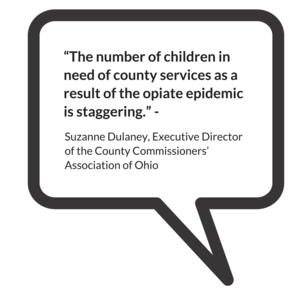
Even though the increase in foster care and relative care placements has been attributed to the opioid epidemic, empirical evidence to prove cause and effect is lacking. This is in part due to the way that the federal government and states track data on child removals, more specifically the contributing factors. For example, there is national-level data on the number of children being removed due in part to parental drug abuse, but it isn’t broken down in a way that shows what type of drug was being abused. Therefore, there is no way to know how many foster care placements stemmed from opioid abuse versus the abuse of another type of illicit drug.
Nonetheless, public officials, advocates and others working in the field are making a direct link between the opioid crisis and increased demand for out-of-home placements. Anecdotally, there are similar accounts across states of the opioid epidemic and its impact on communities. Child welfare agencies are seeing more children come into care because of parental opioid abuse, and children entering the foster care system are getting younger and younger. It has been reported that there aren’t enough foster homes to meet the growing need. Caseworkers are feeling overwhelmed by growing, multifaceted caseloads.
What does this all mean for children and families?
Substance use disorders impact on families
Let’s take a step back. To understand the ripple effect of the opioid epidemic, we have to first look at how parental substance abuse impacts child and family outcomes. At a foundational level, parents struggling with a SUD may not be able to provide for a child’s basic needs (e.g., appropriate supervision or nutrition). Equally troubling, a child can be deprived of emotional support and positive attachment, critical factors in healthy childhood development. Inconsistent parenting inevitability hinders stability in the home. For a child, life can become chaotic and unpredictable, both of which are associated with negative outcomes. That is why parental substance abuse is a known risk factor for child welfare involvement. A 2016 study found that when compared with their peers, children whose parents faced SUD-related issues were three times more likely to experience abuse (physically, sexually, or emotionally) and four times more likely to experience neglect.
Parental substance abuse and child trauma
We know that trauma experienced early in life can adversely impact a child’s development and have long-term health consequences, and parental substance abuse is a one form of childhood trauma (aka an adverse childhood experience or ACE). Often, substance abuse is compounded with other types of adversity, making the severity of potential negative outcomes even worse.
Research shows that history has a way of repeating itself. Children who grow up with complex trauma are more likely to struggle with substance-related issues. One study found that individuals with five or more ACEs were seven to ten times more likely to have issues with illicit drug use. Other explorations into the topic have yielded similar results. There are a host of reasons why people with past trauma experience are more vulnerable to developing a dependence on substance use. While not all children will experience such consequences, the risks to future generations are far too great and warrant immediate intervention. In order to break the cycle, we have to find a way to address the opioid epidemic that is trauma-responsive.
The role of child welfare
The child welfare system is poised to be a catalyst for change. Agencies are tasked with protecting children from maltreatment, abuse, and neglect, and in-home services play a critical role. In-home services are aimed at promoting the well-being of children by ensuring safety, achieving permanency, and strengthening families. When faced with familial challenges, keeping children with their parents is optimal (as long as it is safe and appropriate). Children do best in families with the support of at least one caring adult. Even in crisis, children can thrive when the right protective factors are in place. Removing a child from his or her home disrupts daily life and expectations. All of that instability can be traumatic. The stress that stems from coping with parental loss can have long-lasting effects on a child’s emotional, behavioral, and academic outcomes.
Parental substance abuse has long been an issue for child welfare agencies, one that is now amplified by the recent opioid epidemic. Child welfare agencies across the country are inundated with high caseloads. The complexity of the cases given the unique circumstances and service needs of families battling opioid dependence are adding another layer to an already challenging situation. Not to mention, family stabilization and/or reunification is complicated (contender for understatement of the year). Despite what we know about keeping families together, having children remain with their parents may not be in their best interest due to the impact that substance abuse can have on parenting, making out-of-home placements the safest option. What’s more, reuniting children with their parents can be tricky given ebbs and flows of recovery. The tug-of-war that this creates for caseworkers can be challenging to navigate. So, how do we support those working with families experiencing the crisis firsthand?
Where do we go from here?
Implement what works for families
States and localities are getting creative and implementing interventions that have proven effective for families, recognizing the trauma associated with parental substance abuse. There is ample support for family-centered treatment for substance abuse, including opioid dependence. Additionally, program models that focus on systematic change and cross-system collaboration have also been linked with favorable outcomes.
- Sobriety Treatment and Recovery Teams (START) is an intensive, integrated program for families experiencing co-occurring substance use and child maltreatment. START launched in Cleveland, Ohio in 1997 and extended to Kentucky roughly a decade later. The program matches up specially trained child protective services workers with family mentors (peer support specialists in recovery), behavioral health treatment providers, and the courts. The goals of the program are to ensure child safety and reduce the need for out-of-home care. A 2012 study on the impact of START on family outcomes found that mothers who participated achieved sobriety at a higher rate than those in more traditional treatment programs. Children were also placed in the custody of the state at half the anticipated rate.
- Medication-assisted Treatment (MAT) – an approach that combines medication with counseling and behavioral therapies – is a best practice, and has been linked to decreases in negative outcomes (e.g., opioid use, opioid-related overdose deaths, criminal activity, and infectious disease transmission) and increases in social functioning and retention in treatment, two factors that play heavily into improved parenting skills. MAT has also been found to be effective in providing care for pregnant women who struggle with opioid dependence. Despite some misconceptions in field out the approach, MAT has been associated with improved prenatal care, reduced illicit drug use, and better neonatal outcomes.
- Family Treatment Drug Courts (FTDCs) are specialized courts that respond to cases of abuse and neglect involving caregiver substance misuse. Using a family-friendly approach, FTDCs combine judicial oversight and comprehensive services by bridging together substance use treatment, child welfare services, community supports, and the court system. The unique model balances the rights of both children and parents and aims to create safe family environments while treating the parents’ underlying substance use disorder. In 2015, there were a reported 300 FTDCs across the country, with models and implementation varying state-to-state. The benefits associated with FTDCs include higher participation rates and longer stays in treatment (when compared with non-FTDC participants). The model also yields positive child outcomes; children reportable spend less time in out of home care and are more likely to be reunified with their parent(s).
Support for child welfare agencies and caseworkers
Child welfare agencies are first responders to families in crisis. Caseworkers can encounter stressful or traumatic experiences working with families opioid dependence, witnessing the aftermath of a parental opioid overdose is just one devastating example. That is why supporting frontline staff is imperative.
Provide Specialized Training
Reports indicate that there can be gaps in knowledge among caseworkers around the needs of families with substance use issues and the treatment of opioid use disorders. Training and support in these areas is critical for those working in the field. Additionally, specialized training around recognizing and responding to trauma and trauma-informed care practices is needed when working with families impacted by opioid abuse, as there can be long-lasting negative effects for children if trauma symptoms go undetected and untreated.
Promote Workforce Well-Being
Organizations should employ strategies to reduce secondary trauma and burnout in order to promote workforce well-being. Approaches to reducing the adverse effects of include:
- helping staff identify and manage the difficulties associated with their respective positions;
- encouraging self-care and well-being through policies and communications with personnel;
- offering positive coping skills and stress management training; and
- providing adequate supervision and staff coverage.
Encourage Systems Coordination
Families with substance use issues frequently face other risk factors. Collaboration with other service providers is crucial in helping link parents and their children to the services that they need. The surge in opioid use has trickled into a number of child and family-serving systems. As such, agencies should take steps whenever possible to develop partnerships in their communities to support the work.
Allocate Federal Resources
The crisis is too far-reaching to not have a comprehensive, coordinated federal plan of action in place. Despite declaring a public health emergency, we have yet to devote the level of funds that are needed address opioid dependence. While social service providers and child welfare agencies continue to try and mitigate the impact on a local or state level, the importance of allocating appropriate federal resources to support these efforts cannot be overlooked.
For example, the Maternal, Infant and Early Childhood Home Visiting Program (MIECHV) funds home visiting programs that aim to promote positive parenting practices and healthy parent-child interactions. These programs can also link parents struggling with substance dependence to appropriate treatment providers. Research shows that no matter what level of care is needed, the most beneficial approach is the one that treats families together. MIECHV could help address the unique service needs of the growing number families impacted by opioid dependence.
The Family First Prevention Services Act (FFPSA) may also be a way for federal resources to help child welfare agencies respond to the epidemic. FFPSA is poised to dramatically overhaul the child welfare system, putting federal dollars toward prevention programs and interventions aimed at keeping families together. Substance use treatment programs are among the services that can be prioritized through the restructuring of funds. Additionally, given the increased demand for foster care and relative caregiver placements, advocates are calling to strengthen foster parent recruitment and retention efforts and kinship navigator programs. Increasing capacity in these areas will in turn aid child welfare agencies in finding safe, appropriate placements for children impacted by the current crisis.
There are a variety of other ways that programs and policies could provide relief at a national level; however, equally important is the need for improving data collection across various systems to make informed and evidence-based decisions.
The thing about the ripple effect…
It is hard to stop once it gets put in motion. But that doesn’t mean we shouldn’t try. While the current crisis is overwhelming, there are proposed solutions, ones that can positively impact families and change the course for future generations.
We encourage you to share your thoughts on this important issue. How has the opioid epidemic impacted your community and the children and families you serve? What has been the response? Share your feedback in the comments below!

